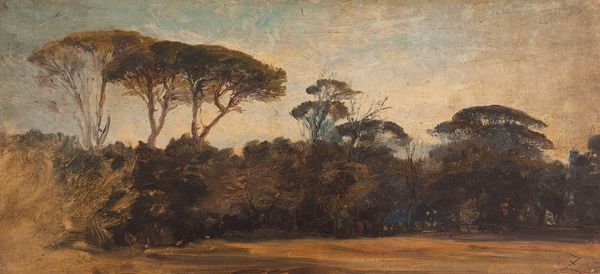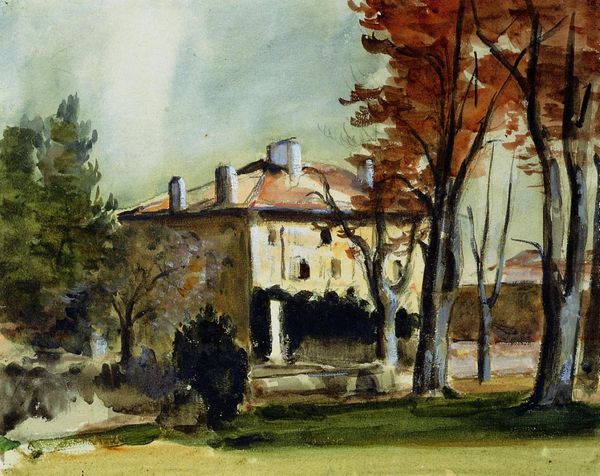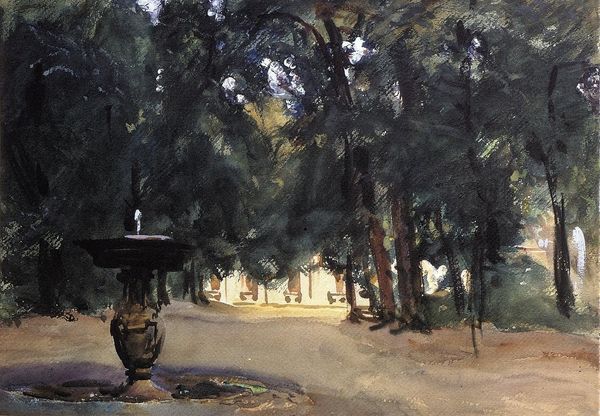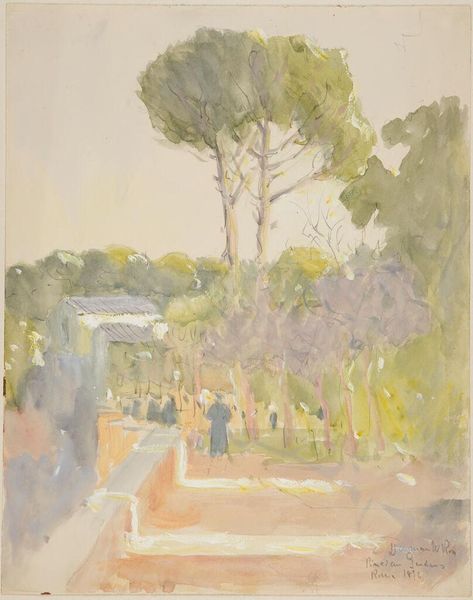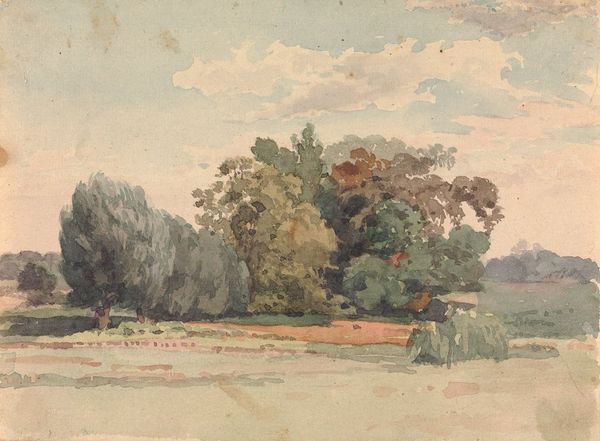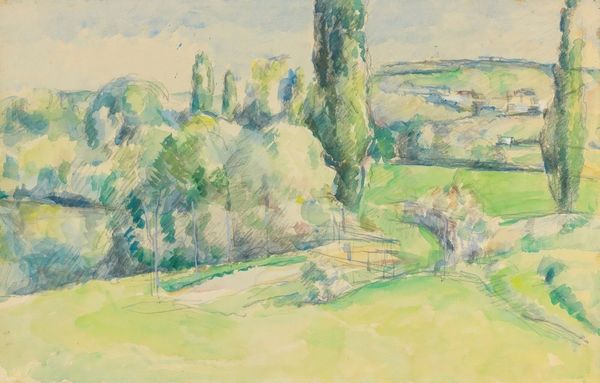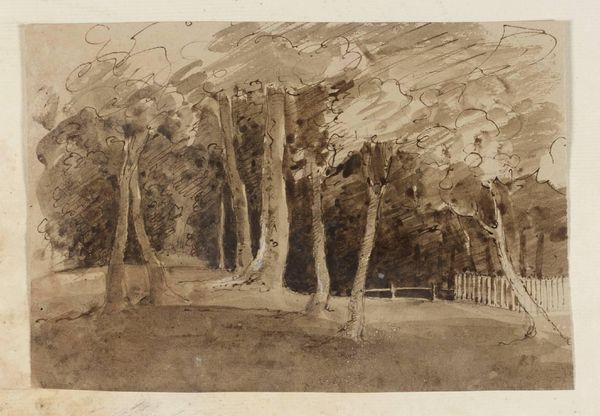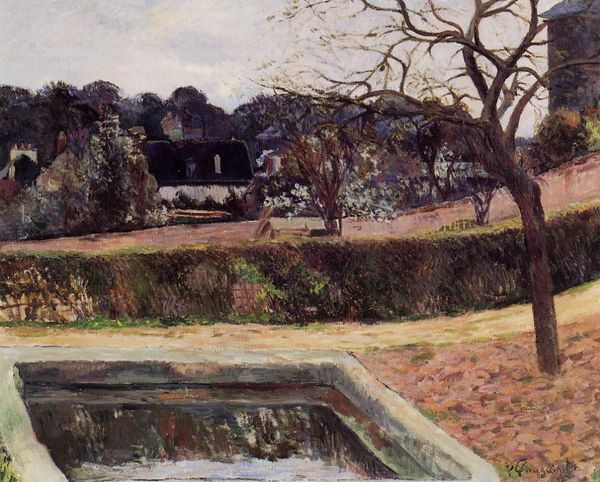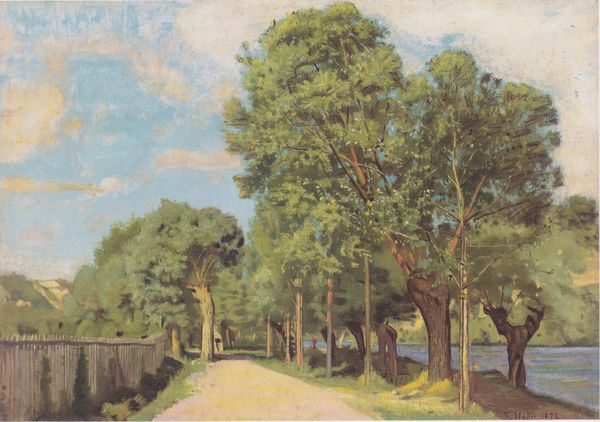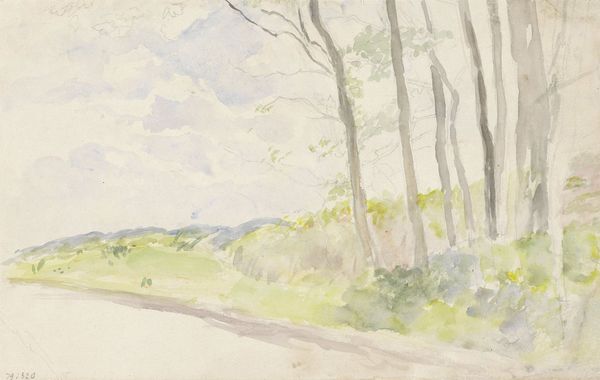
Jardins de la Villa Borghèse vus depuis la Villa Médicis à Rome 1859 - 1860
0:00
0:00
Copyright: Public Domain: Artvee
Curator: Looking at this landscape, painted sometime between 1859 and 1860, we see Jean-Jacques Henner's rendition of the Borghese Gardens as viewed from the Villa Medici in Rome. Editor: It’s striking how subdued the color palette is. It almost feels like a black and white photograph with the slightest hint of green and tan, casting a contemplative mood. Curator: Henner was deeply embedded in the artistic and political milieu of 19th-century France, a time rife with discussions about academic tradition versus avant-garde experimentation. Consider the historical context of French artists seeking inspiration and validation in Rome, often supported by state-sponsored residencies. Editor: The composition is fascinating. The rigid architecture of the Villa's balustrade is contrasted against the organic shapes of the trees. Does that tension reflect something about Henner’s own artistic struggles, straddling the line between the classical and something newer? Curator: I think you're right on the money. These gardens, symbols of leisure and cultivated nature, became charged spaces, didn't they? Rome became an interesting battleground where artists had the opportunity to grapple with the imposing weight of the classical tradition while developing their personal styles, or trying to push new artistic boundaries, that back then felt extremely radical, given the political status quo. Editor: Exactly! And plein-air painting – working outside, directly engaging with the light and atmosphere - also speaks volumes. It breaks down hierarchies; the artist is no longer bound to the studio, but present, engaging with lived reality in a fresh way. Curator: Think, also, of how access to these gardens, these villas, was itself a statement about social standing and the politics of patronage. Who got to look at this view, and from what position of power? Editor: Seeing the classical statue partially obscured in the painting is intriguing as well; is Henner indicating something by its secondary placement here? Is it an artistic act of defiance, where the natural landscape eclipses this cultural object? Curator: Possibly. I see that the gardens became sites where new artistic identities were negotiated amidst debates about tradition, revolution, and the shifting meaning of “landscape” itself. It reminds us that artistic choices, seemingly about aesthetics, are also intertwined with larger societal forces. Editor: This makes me think about how artists shape our perceptions of power structures. Seeing that vista presented as something observed but still out of reach tells its own tale. Curator: Indeed, Henner’s rendering allows for this kind of dialogue— it lets us grapple with these crucial issues, which makes experiencing it here today feel as exciting as when he painted it. Editor: A wonderful lens into understanding this pivotal period in art history.
Comments
No comments
Be the first to comment and join the conversation on the ultimate creative platform.
